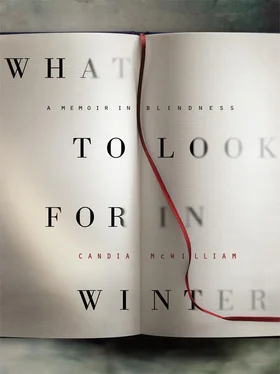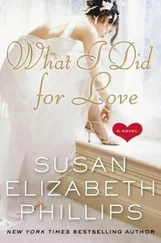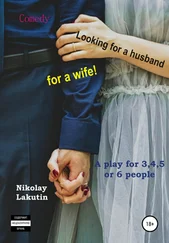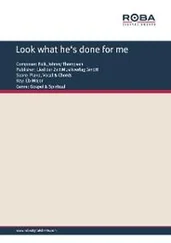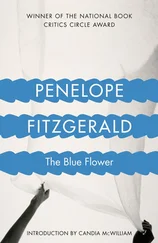It was at that first Christmas after the sadness of our parting that I saw how a pure flirt like Mrs Brunner made things easier between me and Quentin. The great lack in our lives, probably thanks to the premature death of his parents and my mother, was grown-ups to teach us how to pull the splinters out instead of driving them further in.
We developed a pattern, familiar to many families, whereby the children spent half the holidays with me and half with their father, and alternated, insofar as it was possible, at weekends. Thank God there were the two of them to sustain one another and grumble about this together, since it was to go on for a long time. I remember standing on the nursery floor at Wotton having tidied all their toys away and looking at the departing car, thinking, ‘What is in their heads?’ At around this time I wrote a children’s book and illustrated it. It was really about Oliver and Clementine, of course, and it was always going to be destined for Quentin, who has the paintings now, which are portraits of his children.
There was no sense of unsafety at Wotton although we were an old lady and a younger woman and two small children alone. The whole place was barred up so snugly that its only burglar, during my time, was a ferocious wind that punched holes in three fragile windows, whose panes simply couldn’t take the brunt in spite of their delicate ductility, like that of sails.
I had the notion that I would write some short stories to make a bit of money. I sent five to Auberon Waugh at the Literary Review . He sent them back with a kind note saying that he and his wife had enjoyed reading them in bed. I imagine this was a tease. I then tried applying to The Archers to see if they would like a new scriptwriter, but they wouldn’t.
There’s nothing for it, I thought, but writing a novel. I had bought my father an electric typewriter that he had seen the Observer newspaper was offering at a reasonable price. He passed me his old typewriter, whose keys you really had to think about pinging down like those of an old till.
I wrote my first novel, A Case of Knives , in my bedroom at Wotton House, a room whose mirrored cupboards chopped up the images thrown by the circular mirror the size of the shield of Achilles on the opposite wall.
In the South Pavilion lived Sir John Gielgud. In the morning, you could see his partner Martin taking their shih-tzu for a walk. Opposite Sir John lived an elegant German lawyer who worked between Washington and London and kept this celestial pavilion as his country hideout. He often entertained my children and me to Sunday lunch. His line in girlfriends was terrifying to one who has never seriously in her life thought of wearing leather. On the whole they turned out to be very nice and, moreover, to do things like run Lufthansa’s legal department or own a chain of supermarkets in the old Austro-Hungarian countries.
Behind this exquisite pavilion was a courtyard containing a long house that had at one point been where beer had been brewed for all the servants employed in the main house. In this house lived Graham C. Greene and his family, including at one point his mother Helga, with whom Raymond Chandler had been in love. Quite briefly, Clarissa Dickson-Wright was his housekeeper, and once she babysat for me. At this point she and I were both what is called ‘practising alcoholics’. I had no idea.
Every day when I woke up at Wotton, I was glad to do so. I suppose that means that one has found a place in the world. Once I saw fox cubs playing leapfrog on the back lawn. I so loved being there and when the children were with me it felt as though beauty in itself might feed them the things that disunity was taking from them. It was a hopelessly over-aestheticised view, I can see. But to this day, I like it when I know that they are in the places where there is beauty.
Mrs Brunner met and charmed my father; they were exactly each other’s sort of thing. Daddy, possessed by architecture, crazy about Soane and handsome; and Mrs Brunner, obsessed by her great charge, her house, and very fond of flirting. Mrs Brunner welcomed other friends as well, though she was a great one for taking what the Scots call scunners. She was absolutely beastly to the boyfriend of one of my best friends whom she regarded, quite correctly, as treating my friend unkindly. If not a witch, she was an advanced telepath. She could also dismiss people simply on the unfair grounds of their want of physical attractiveness, and she was extremely fussy about fairness between the children so that if someone bought a present for just one of them, there would be a note requesting the presence of the giftless child in Mrs Brunner’s drawing room where would be laid out a fairy feast and some compensatory present.
It is quite a feat for a mother of an only child to think in this way. She had at some level remained not childish but fierce as children are, and we were all her cubs and felt it. I hope that it is no shadow to Mrs Brunner’s own daughter to say that Mrs Brunner made me feel, if not mothered, protected.
My friend Rosa was a fellow of Brasenose. My friend Fram Dinshaw, whom I’d known since I was less than twenty, was a fellow at St Catherine’s College. My friend James Fergusson was working at an antiquarian bookshop in Oxford. Jamie and the children and I would meet in Oxford for greedy Chinese lunches at a restaurant where in the fish tank were those carp whose eyes stick out and who seem to be dancing with their floating veils of fin.
Long before my first marriage, Fram had, outside Rosa’s house in Oxford, given me a kiss. Shortly afterwards he wrote to me. I read the letter standing up on the Bakerloo Line between Warwick Avenue and Oxford Circus, on my way to Vogue. In it, he adumbrated that if I did not smell so horribly of smoke he might conceivably take an interest in me and that there was something about me that reminded him of blackberries and that we might, if I calmed down, end up together.
But by now, many years later, I was a vessel with cargo, my children. All the smelling of blackberries in the world doesn’t mean that you can be careless with human souls.
Our first date, or rather what reveals itself to have been, retrospectively, a date, was to Rycote Chapel. In the car Fram put on ‘Soave sia il vento’. Later he made me a tape recording of some Larkin poems. I found myself playing them when he was not there. I listened again and again to ‘The Trees’:
Yet still the unresting castles thresh
In fullgrown thickness every May.
Last year is dead, they seem to say,
Begin afresh, afresh, afresh.
Once, when the children were with Quentin, I agreed to go and stay with Fram at his family’s house outside Cortona. It was to be reached by a dirt road cut into the hillside. Opposite lived a couple called Gina and Nino Franchina. She was the daughter of the artist Gino Severini and granddaughter of the poet Paul Fort. Nino made tree-sized helical metal sculptures. Further along lived a family who would prove to contain the novelist Amanda Craig, though I’ve not met her.
Early one morning, taking a walk up the lane and between the strawberry trees, I looked in the damper gullies at the edge of the dry thin path. I couldn’t believe what I saw. There they were, growing wild, those black velvet irises that I love. They were everywhere at that spot, and beyond them red tulips, with reflexed petals and thin stems like veins, which preferred to be on flatter tilth, as though they knew that they were a motif on a million Turkish carpets.
The house at Cortona was simple, two storeyed, whitewashed within and then decorated by Fram’s mother, who had a gift for drawing that had won her a place, that she did not take up, at the Slade. The house smelt of woodsmoke, lemons and basil and was set amid olive groves. It had a particularly non-Italian garden because the whole family had that passion for flowers that may have come from living beside a desert in Karachi. Outside the house was a large Magnolia grandiflora, crinum lilies grew along the front and a catalpa shaded the terrace where, in good weather, we ate outside. Troughs of basil were everywhere and ‘Heavenly Blue’ morning glory twined around the kitchen door. The rose that changes in colour, Rosa chinensis mutabilis , grew around the front door. At Easter peonies we never identified, which had come from the villa below, would flower with pink heads considerably bigger than my own children’s. The bottom of the garden was hedged with a vine of that most fragrant and intoxicating grape the uva di fragola , the grape whose taste and scent is that of a strawberry and makes a wine that for some reason the European authorities disapprove of, so it is drunk in secret among friends. Rosemary and sage and all the herbs that flourish in dryness lent their oil to the air. By the well stood a fig tree and another deeper down the garden. At the side of the house was the kitchen garden, or orto.
Читать дальше
